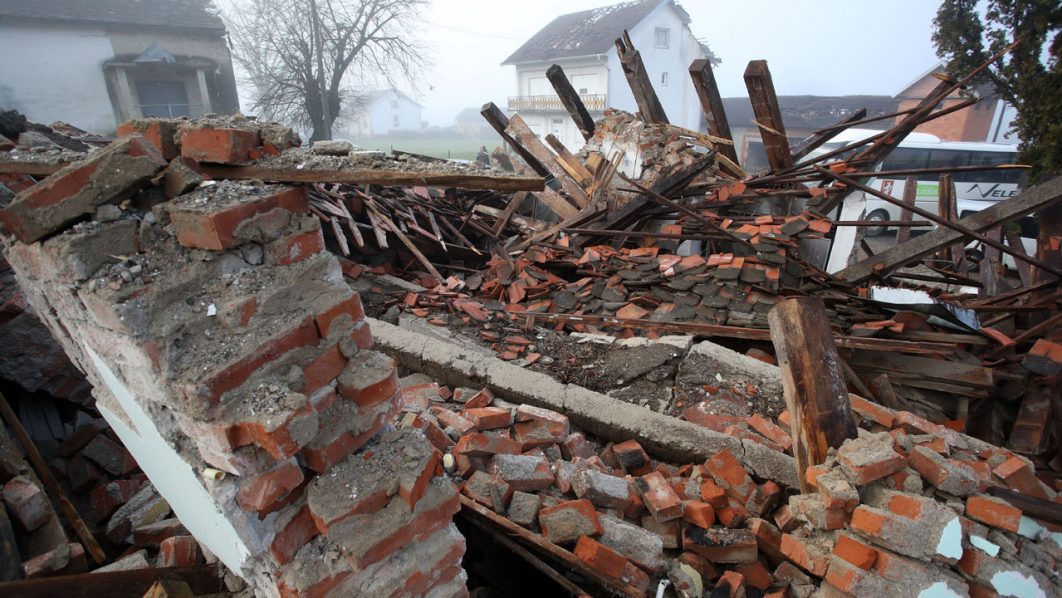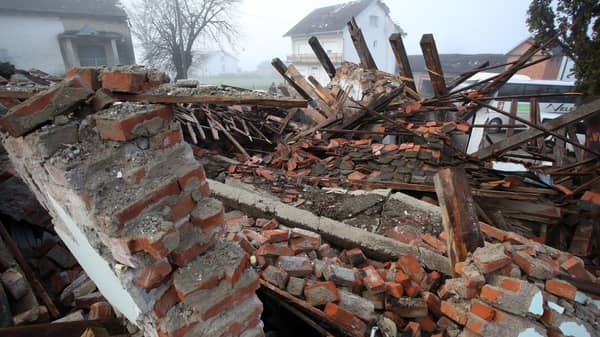
The Federal Government, on Wednesday, launched an in-depth investigation into the recent earth tremors that shook Mpape, Abuja, saying that the government is awaiting recommendations from seismological experts and the Global Navigation Satellite System (GNSS) reports.
The tremors, which began late on September 16, 2024, involved a series of seismic events, with six to eight incidents recorded throughout the night, were first detected around 11:00 pm, alarmed the community as loud noises and ground shaking disrupted the calm.
The most significant event occurred at 11:18:37 p.m., registering a local magnitude of 3.1 and a focal depth of 11 km, according to the Centre for Geodesy and Geodynamics, part of the National Space Research and Development Agency (NASRDA).
The Minister of Science, Technology, and Innovation, Mr. Uche Nnaji, disclosed this in Abuja, while briefing journalists on the development, and reassured the public that a team of experts is actively studying the tremors.
He emphasized that while the situation has raised concerns, there is no immediate cause for alarm.
He said: “Many may recall that Mpape experienced a similar sequence of earth tremors from September 5 to 7, 2018, which drew significant local and international attention to Nigeria’s increasing seismic activity. The recent tremors were accompanied by loud noises and ground shaking, causing widespread alarm among the residents of Mpape.
“In response, the government is currently processing and analyzing comprehensive datasets from its Seismological and GNSS stations to provide relevant recommendations to the FCT administration.”
The minister also warned of the rising flood risks in Nigeria’s southern regions due to the overflow of the Lagdo Dam in Cameroon. By mid-September, the overflow had impacted over 18,000 hectares of land, posing significant dangers to affected communities.
He noted that the government was working with international agencies to track the flood and issue timely warnings.
Speaking with journalists on the sidelines of the briefing, Dr. Mathew Adepoju, the Director General of NASRDA, highlighted the role of advanced space science and technology in disaster management.
He explained that early warning systems, such as the GNSS receiving stations, are crucial in monitoring deep underground activities and mitigating risks to communities like Mpape.
“We want to assure the public that we are actively monitoring the situation,” Dr. Adepoju stated. If necessary, the government is prepared to take appropriate action to protect the people.”
Meanwhile, the Director-General of the Nigerian Geological Survey Agency, (NGSA) Professor Olusegun Ige, urged the Federal Capital Territory residents not to panic.
Ige said: “The Monitoring Station (NGSA-5) at Katampe has been capturing several significant ground motions with high moment magnitudes (Mw) in the past five days, beginning from September 13, 2024 till date.
“Only one mild event was recorded on September 13th. Six of these events were captured on the 14th of September, while over 21 events were captured on the 15th with higher intensities. More than twenty events were recorded on the 16th of September.
“The intensity and frequency of the tremor appear to increase from the 13th to 16th September. There are a few weak events recorded today, 17th September.
“Preliminary analysis of the waveforms showed that the sources of the ground motions are less than 5 km away from the monitoring station.
“NGSA team also visited the affected areas for on-the-spot assessments of the events. From the accounts of the residents of the affected areas, the observations by the NGSA team, and findings from earlier interpretations of the airborne geophysical data over the area and adjoining areas, the following conclusions were made.
“The tremors are a result of accumulated stress along the identified faults and released seismic energy, which may have traveled through associated fractures to areas where the tremors were felt around the FCT.
“There are multiple epicenters associated with the recent tremor. Most of the epicenters are located northeast of the NGSA-5 Seismic Station around Mpape axis, while a few are located southwest of the Station around Katampe axis The intensities of the tremors are weak to light, ranging from III – IV on the Modified Mercalli Scale, and pose a very low level threat.”
He noted that the residents of Mpape, Katampe, Maitama, and other areas where the tremors were felt are advised not to panic as the tremors can be generally described as low.
He added, “The Agency is keeping a close monitoring of the situation and will provide updates as may become necessary. The general public should also be aware that the NGSA Seismic Stations are being monitored in real-time to ensure prompt alerts on any major event.”






